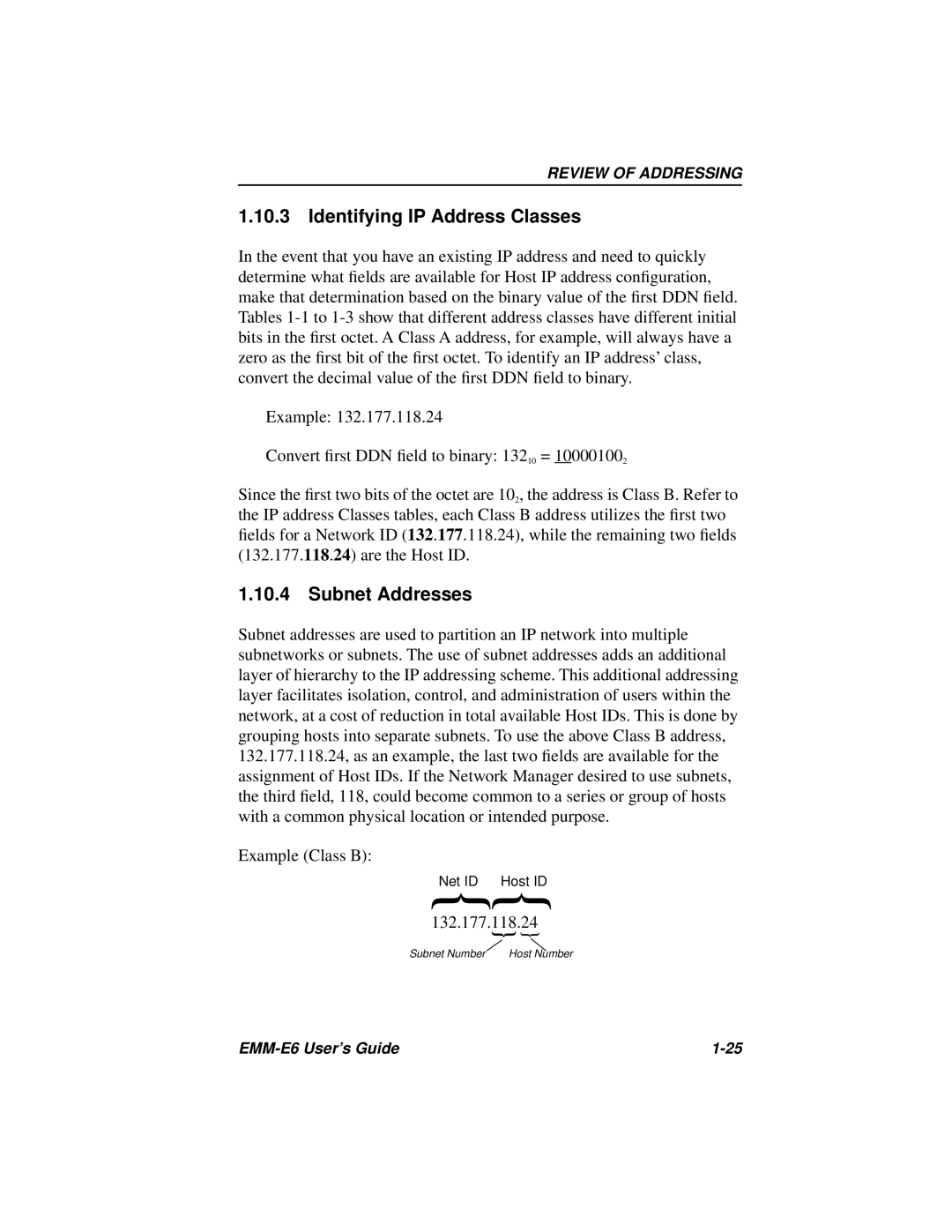
REVIEW OF ADDRESSING
1.10.3Identifying IP Address Classes
In the event that you have an existing IP address and need to quickly determine what fields are available for Host IP address configuration, make that determination based on the binary value of the first DDN field. Tables
Example: 132.177.118.24
Convert first DDN field to binary: 13210 = 100001002
Since the first two bits of the octet are 102, the address is Class B. Refer to the IP address Classes tables, each Class B address utilizes the first two fields for a Network ID (132.177.118.24), while the remaining two fields (132.177.118.24) are the Host ID.
1.10.4Subnet Addresses
Subnet addresses are used to partition an IP network into multiple subnetworks or subnets. The use of subnet addresses adds an additional layer of hierarchy to the IP addressing scheme. This additional addressing layer facilitates isolation, control, and administration of users within the network, at a cost of reduction in total available Host IDs. This is done by grouping hosts into separate subnets. To use the above Class B address, 132.177.118.24, as an example, the last two fields are available for the assignment of Host IDs. If the Network Manager desired to use subnets, the third field, 118, could become common to a series or group of hosts with a common physical location or intended purpose.
Example (Class B):
Net ID | Host ID |
{ { | |
132.177.118.24 | |
| { { |
Subnet Number | Host Number |
|
